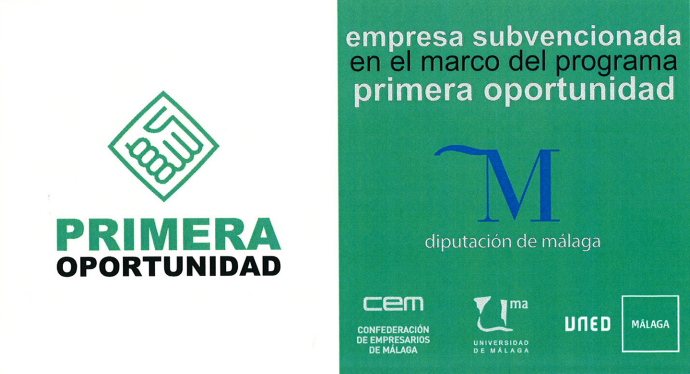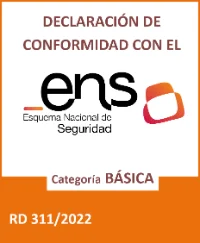What is a QR Code and Why Should You Use It?
A QR code (Quick Response) is a type of two-dimensional barcode that can store a large amount of information, such as URLs, text, phone numbers or email addresses. Unlike traditional barcodes that can only be read in one direction, QR codes can be read both horizontally and vertically, allowing them to store more data in a compact form.
The implementation of QR codes has increased dramatically in recent years. According to a report by Statista, the use of QR codes on mobile devices grew by 26% in 2022. This trend is particularly relevant for small business owners interested in the digital marketingQR codes offer an easy and efficient way to interact with customers and direct them to specific content.
But why you should use them? First of all, QR codes facilitate the process of how to create a QR codeThe new tags, allowing entrepreneurs to generate personalised codes that can direct users to special offers, surveys, or even payment pages, are also a powerful tool for offline marketing campaigns, such as brochures, posters and business cards, linking them to digital platforms with a single scan. In addition, their versatility makes them a powerful tool for offline marketing campaigns such as brochures, posters and business cards, linking them to digital platforms with a single scan.
Benefits of Using QR Codes in Marketing
- Accessibility: They allow quick and easy access to information from any device with a camera.
- Interactivity: They facilitate interaction between the customer and the brand, improving the user experience.
- Analytical: They provide analytical data to help understand customer behaviour and measure the effectiveness of campaigns.
Finally, QR codes can be customised to align with a brand's visual identity and can be harmoniously incorporated into any advertising medium. Digital marketing experts such as HubSpot point out that the strategic use of QR codes can significantly increase conversion rates and customer engagement.
Simple Steps to Create a QR Code Online
Creating a QR code may seem like a complex task, but it is actually quite simple if you follow the right steps. **QR (Quick Response) codes are a powerful tool used in digital marketing to quickly direct users to websites, social networks, apps and much more. For create a QR code online, you must follow a series of steps that we will detail below.
1. Choose an Online Tool
The first step to know how to create a QR code is to choose the online tool to be used. There are numerous options available on the internet, each with its own particular features. Some of the most popular include **QR Code Generator**, **Scanova** and **QR Code Monkey**. These platforms often offer both free and paid versions with additional functionality. It is important to read reviews and compare features before making a decision.
2. Select the Content Type
Once you have chosen the online tool, the next step is to select the type of content you want to encode. QR codes can contain different types of data such as:
- Web links
- Text
- Contact information
- Geographical locations
- Links to social networks
For example, if you want the QR code to redirect users to your website, you will need to enter the corresponding URL in the designated field. It is crucial to verify that the data entered is correct, as any errors can affect the functionality of the QR code.
3. Personalise the QR Code
Customizing your QR code is a great way to align it with your brand's visual identity. Most online tools allow you to adjust the colour, add logos and modify the QR code design. According to **hubspot.com**, **custom QR codes** have a 30% higher scan rate compared to non-custom codes. Make sure the final design is easily scannable by most smartphones.
Do you want to integrate QR codes into your marketing strategy and don't know where to start?
The Best QR Code Generators & Tools
Nowadays, QR codes have become an essential tool in the digital marketingThe new digital business solution, enabling businesses to easily connect the physical world with the digital world. For those small business owners looking to how to create a QR codeThere are several tools and generators that stand out for their reliability and functionality.
1. QR Code Generator: This platform is one of the most popular due to its user-friendly interface and multiple customisation options. In addition to generating static QR codes, QR Code Generator allows the creation of dynamic codes, which means that you can change the information contained in the code without having to generate a new one. According to a HubSpot report, more than 53% of businesses have seen a significant increase in customer interaction after implementing dynamic QR codes.
2. Bitly: Originally known for its URL shortening service, Bitly has added QR code generation capabilities to its platform. One of the reasons many businesses choose Bitly is because of its robust analytics, allowing detailed tracking of QR code performance. According to Bitly, its users see a 34% increase in conversions when using QR codes, underlining its effectiveness in marketing campaigns.
3. Canva: Although primarily known as a graphic design tool, Canva offers an option to generate custom QR codes. This allows small business owners to not only generate QR codes easily, but also to integrate them into well-designed marketing materials. As digital marketing expert Sarah Henderson says: "The aesthetics of promotional materials can increase consumer trust and conversion rates by as much as 27%, and QR codes are no exception".
- User-friendly interface
- Personalisation options
- Robust analytical capabilities
Personalisation of your QR Code: Colours, Logos and More
The personalisation of your QR code is a powerful tool in your marketing strategy. digital marketing. More and more companies are opting for personalised designs to stand out and improve their brand recognition. But what does personalising a QR code really involve and how can it benefit your business?
Change the Colours of your QR Code
A traditional QR code is black and white, but this can be modified to match your brand colours. By changing the colours of your QR code, you improve its visual appeal and brand consistency. According to a study by QR Code Lab, customised QR codes with colours can increase the scan rate by 35% compared to traditional black and white QR codes.
Incorporate Logos
Adding your company logo to the QR code design can further strengthen your branding. Placing a logo in the centre of the QR code not only makes it more recognisable, but also conveys a message of professionalism and authenticity. According to a Scanova report, QR codes with logos experience an increase in consumer trust and improved user interactions.
Other Personalisation Elements
In addition to colours and logos, there are other customisation elements that can be incorporated. For example, you can modify the shape of the modules (the small squares that make up the code) to better align with your brand aesthetic. Changing the border design and adding eye-catching patterns can also make your QR code stand out.
The key to effective customisation is to ensure that changes do not affect the functionality of the code. It is crucial to thoroughly test any custom design to ensure that it can be easily scanned by different devices. According to a survey by the Mobile Marketing Association, the 78% of users would abandon a scan if the QR code is not read on the first attempt, underlining the importance of maintaining a balance between aesthetics and functionality.
Common Mistakes in Creating QR Codes and How to Avoid Them
1. Lack of Scannability Testing
One of the most common mistakes in learning how to create a QR code is not to test its scannability before printing or distribution. QR code scannability can be affected by factors such as code size, colour contrast and print quality. We would recommend testing with multiple scanning devices and applications to ensure that the code works properly. According to a study by the University of Tartu, lack of testing can decrease the scan rate by 30%.
2. Use of Incorrect Colours and Contrasts
Choosing the wrong colours can affect the devices' ability to read the QR code. Using light colours for the background and dark colours for the pattern is essential to ensure correct scannability. Paul Rand, a graphic design expert, suggests: "Design is not just what it looks or feels like, design is how it works", highlighting the importance of functionality over aesthetics. Be sure to avoid colour combinations that do not contrast well, such as light blue on white.
3. Redirects to Pages Not Optimised for Mobiles
Another significant mistake is directing QR codes to pages that are not optimised for mobile devices. Since most people scan QR codes from their smartphones, it is crucial that landing pages are responsive. According to Statista, more than 80% of Internet traffic will come from mobile devices by 2023. If the page does not load correctly on mobile, the user will not have a good experience and this can be detrimental to the digital marketing campaign.









